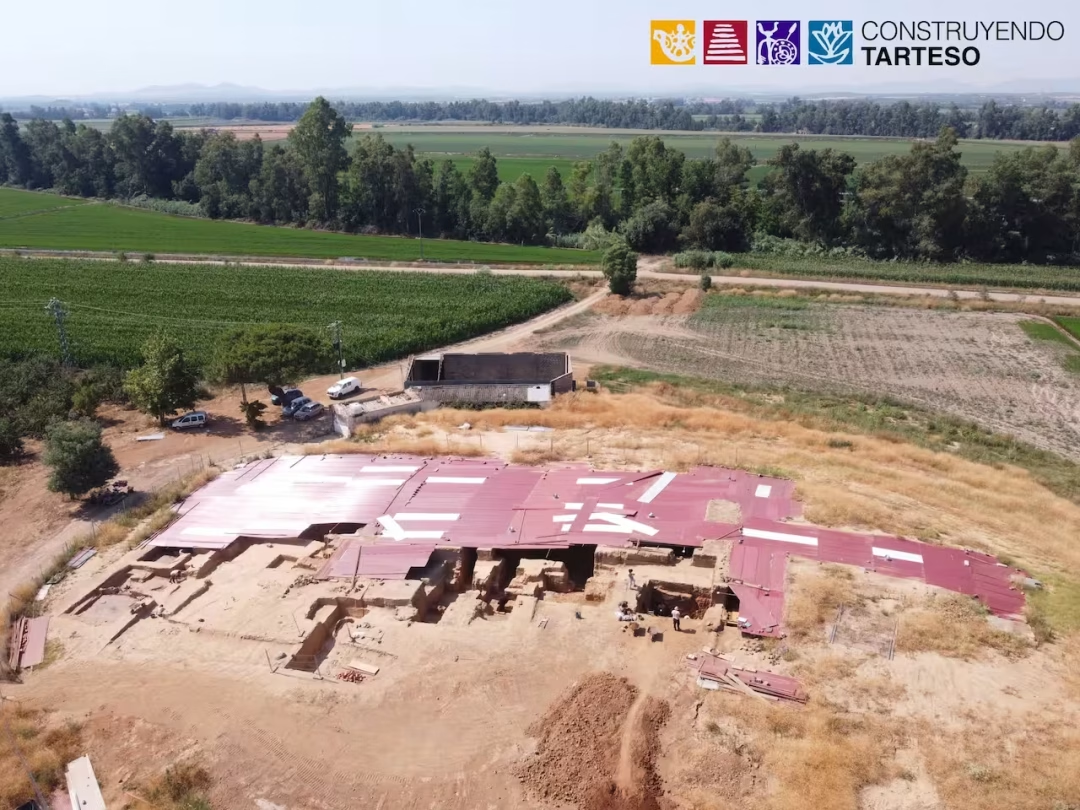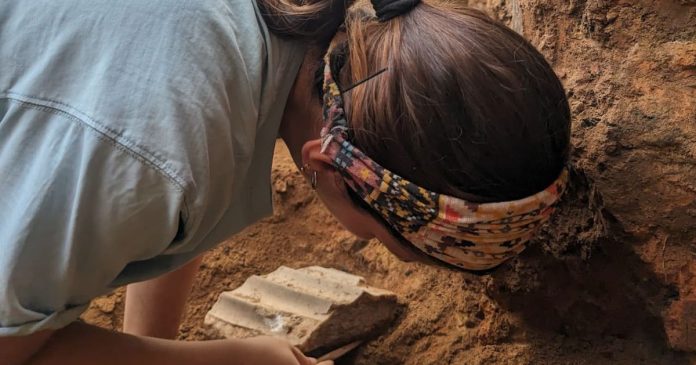Archaeological investigations at the Tartessian site of Casas del Turuñuelo (Badajoz, Spain) have yielded significant findings. The work is led by the Institute of Archaeology of Mérida (IAM, CSIC–Junta de Extremadura), under the direction of Esther Rodríguez González and Sebastián Celestino Pérez. This monumental complex, dating to the Tartessian period (8th–5th centuries BCE), continues to provide exceptional material evidence.
Discovery of Imported Marble Element
Notable among the recent artifacts recovered—including Attic ceramics and a bronze potter’s wheel—is a marble column segment. Archaeometric analysis conducted by Anna Gutiérrez García-Moreno (Catalan Institute of Classical Archaeology – ICAC) identifies the marble as originating from quarries on Marmara Island (ancient Proconnesus, Asia Minor), within the Greek cultural sphere during the 5th century BCE. While precise quarry localization requires further analysis, its confirmed Greek provenance and chronology render it unique within the western Mediterranean archaeological record for this period.

Significance and Interpretation
The column’s context, associated with contemporaneous Attic pottery, and its potential ritual function as an altar underscore its exceptional nature. Its discovery in the Iberian interior, significantly distant from coastal zones typically associated with Greek trade goods, indicates Casas del Turuñuelo’s substantial integration into broader Mediterranean exchange networks. This finding corroborates the site’s previously documented access to exotic materials, such as Macedonian glass and Pentelic marble sculpture elements from Attica, further illustrating its high status.
Broader Site Findings and Complexity
The seventh excavation campaign, focusing on eastern and northern sectors, revealed six additional rooms, including three exterior spaces associated with productive activities. Artifacts like kilns, loom weights, milling stones, and storage vessels, alongside the bronze potter’s wheel, attest to specialized craft production. A technically sophisticated hydraulic structure, nearly one meter in height and constructed from large stone blocks, predates the main building. This feature demonstrates advanced construction planning and engineering knowledge by the Tartessian builders.
Historical Importance of Casas del Turuñuelo
Casas del Turuñuelo has consistently produced archaeologically significant results over the past decade. Key prior discoveries include:
- Extensive ritual animal sacrifices (2017)
- The first known anthropomorphic representations attributable to Tartessos (2023)
- A slate plaque depicting martial scenes and potential southern Paleohispanic script (2024)
The site’s exceptional preservation, unusual for Iron Age contexts in the region, facilitates detailed study of Tartessian construction techniques, such as large-scale adobe use, investigated through the Construyendo Tarteso project (Spanish Ministry of Science).

